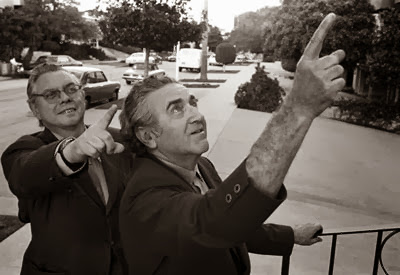Horizontal vs. Vertical
 |
| Source |
Vertical images, as Zettl says, suggest power and dynamics. This I would agree is true purely because it breaks up my sense of a horizontal world and pulls me from my comfort zone. For example, this picture suggests that the ocean cliffs are powerful and stand in stark contrast to the beautiful ocean horizon.
Magnetism of the Frame
I also liked Zettl's discussion on the magnetism of the frame. While I wouldn't call this feature "magnetism," per say, I do agree with the overall idea: that the negative space within an image balances differently with the positive space depending on its position and its size. For example, the portrait directly below is not as visually appealing as the portrait on the bottom because the face is over taking the negative space that is needed to balance out the image. The bottom portrait uses the magnetism of the frame to pull the eye to the right and create visual interest.
Thus, it is important to pay attention to the magnetism of the frame and be mindful of the balance between positive and negative space. Since these are professional photos, the focus and blurring of the background also helps in both of these.
Magnetism of the Frame
I also liked Zettl's discussion on the magnetism of the frame. While I wouldn't call this feature "magnetism," per say, I do agree with the overall idea: that the negative space within an image balances differently with the positive space depending on its position and its size. For example, the portrait directly below is not as visually appealing as the portrait on the bottom because the face is over taking the negative space that is needed to balance out the image. The bottom portrait uses the magnetism of the frame to pull the eye to the right and create visual interest.
 |
| Source |
Low and High Definition Images
Images used to only be able to be shared in low definition, but now high definition is becoming more prevalent. Is a high definition image always the best way to share information? My initial answer would have been yes, but after reading Zettl's discussion on how low definition images keep the viewer more engaged and force them to fill in blanks, I think that sometimes low definition images could be used effectively as a means of audience interaction.
Vectors
The vector theory of images says that specific parts of the image can carry direction and magnitude with which to direct the eye. There are graphic vectors which don't necessarily carry much direction or magnitude but still have the power to direct the eye in a direction while following the shape. There are motion vectors which result from an object actually moving in a direction. There are index vectors that explicitly give direction by consisting of an image such as an arrow or the gaze of eye, etc. For example, these old men below are pointing towards the sky because they have spotted Superman. Their points are a direction vector as well as continuing vector. Not only is your gaze directed upwards and to the right by their points, but their vectors are going in the same direction.
 |
| Source |
In honor of Halloween and in light of this image, who is your favorite superhero and why? How does their symbol balance with their costume in order to make them as visually appealing as possible?


















